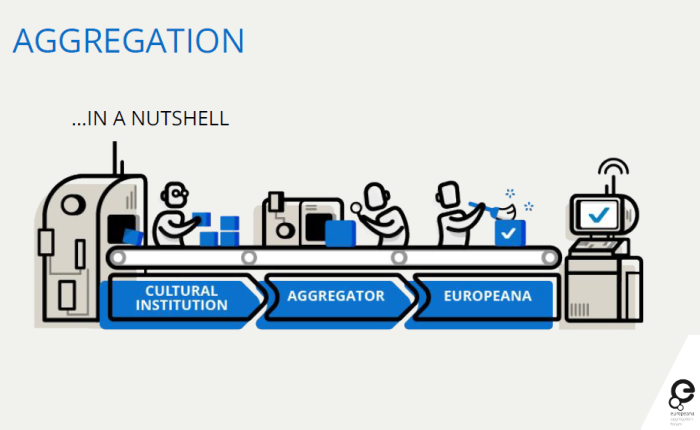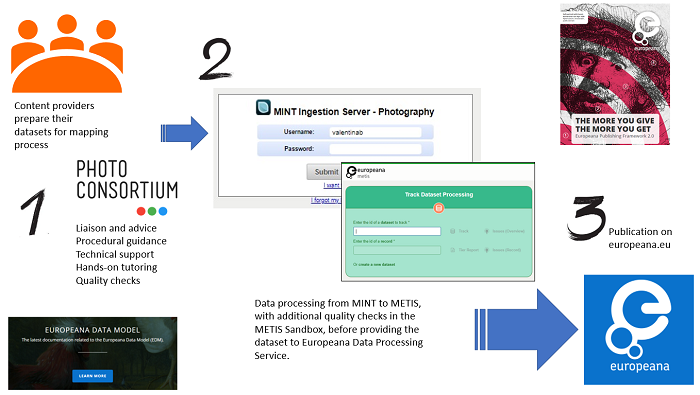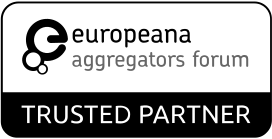Photoconsortium operates since 2016 as accredited aggregator of Europeana, the flagship initiative of the European Union that provides cultural heritage enthusiasts, professionals, teachers, and researchers with digital access to European cultural heritage materials from museums, libraries, archives and other public and private organization which preserve cultural heritage collections.
Aggregators work with cultural heritage institutions to gather authentic, trustworthy and robust data and make it accessible through Europeana.eu website. All Europeana aggregators are members of the Europeana Aggregators’ Forum (EAF), a network of national, regional, domain and thematic aggregators who – among others – work to exchange the knowledge and best practice that supports aggregation and data sharing with Europeana.

Photoconsortium is the thematic aggregator and expert hub on photography, providing support to institutions to learn about Europeana and the opportunities it offers, do the paper work that is necessary to join, and share their collections to Europeana for publication at best quality.
How aggregation works
Photoconsortium enables the source metadata schema of the content holder to be properly mapped to EDM, the Europeana Data Model, via an aggregation infrastructure and mapping tool named MINT, which is created and maintained by the National Technical University of Athens, one of Photoconsortium’s founder members.

Phase 1:
PREPARATION: The content owner prepares their data according to guidance and suggestions provided by our staff at Photoconsortium. We are seasoned and expert in helping prepare the collection in compliance with the minimal requirements of data and metadata quality, and all support is provided to the content owner be them either beginners or well experienced. One-to-one tutoring is provided in all phases of dataset preparation, as well as guidance on image quality and IP advice.
Phase 2:
MINT MAPPING: Once the dataset is prepared in the content owner preferred format (e.g. MS Excel, csv, xml…), we import the records in the Photoconsortium-MINT and provide here the mapping of the source metadata to EDM. Quality checks and mapping refinements in compliance to the quality requirements of the Europeana Publishing Framework are also provided, so to make the most appropriate mapping of the collection. Where applicable, we also add LOD links (to authority files and established vocabularies e.g. Getty AAT, Wikidata, Geonames…) to make the collection more easily retrievable and searchable. The mapped dataset in EDM format is then published on a OAI-PMH server.
Metis SANDBOX: From here, additional quality checks and compliance checks are provided by Photoconsortium via the Metis Sandbox, a test environment which clones the expected result of the records as they were published in Europeana. This tool enables a reliable preview of the collection in the Europeana website and also offers a detailed report of the content and metadata quality and possible further improvements if applicable.
Metis INGESTION TOOL: At this point it is time for Europeana Data Publishing Service to ingest the dataset from the OAI-PMH server into the Metis ingestion tool. Ideally, the result of ingestion in METIS should perfectly correspond to the one obtained in the Metis Sandbox, but possible additional adjustments can be required. Some back-and-forth between Europeana, Photoconsortium and the content owner do happen normally, as the target is to achieve the best quality tiers of the EPF and the best user experience for those who visit the collection in Europeana website.
Phase 3:
PUBLICATION IN EUROPEANA WEBSITE: The final step of the process is to have the collection appear in Europeana.eu website.
Visibility of the collection and editorials
Due to a long-lasting experience in various types of our European projects, Photoconsortium is supporting the collections aggregated in Europeana to come to surface and get visibility, by creating in close collaboration with the content owner compelling editorials to be published in the Europeana website (such as galleries, blogs, virtual exhibitions), in the Historiana e-learning platform, and of course on Photoconsortium website, social media and Educational Portal.

